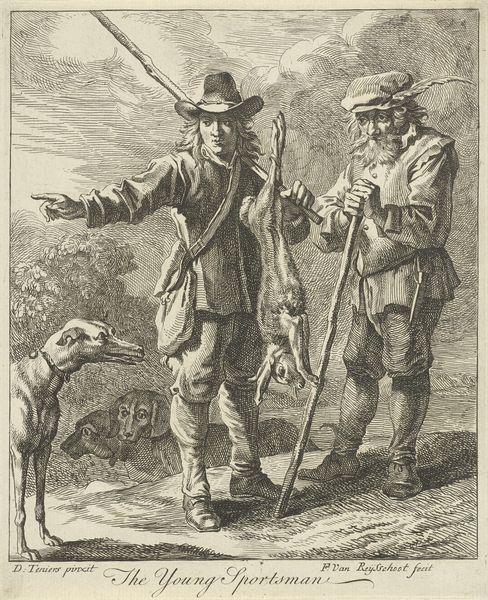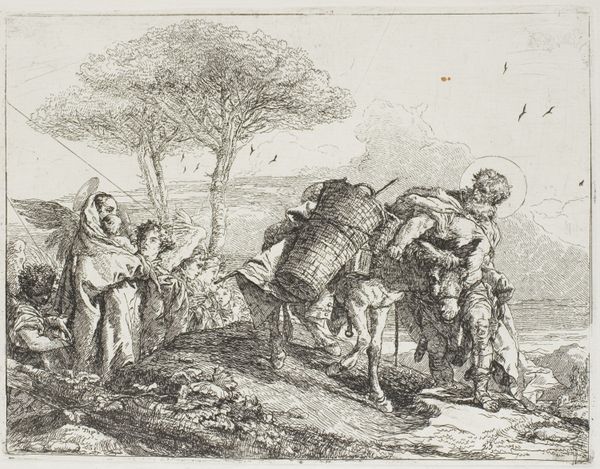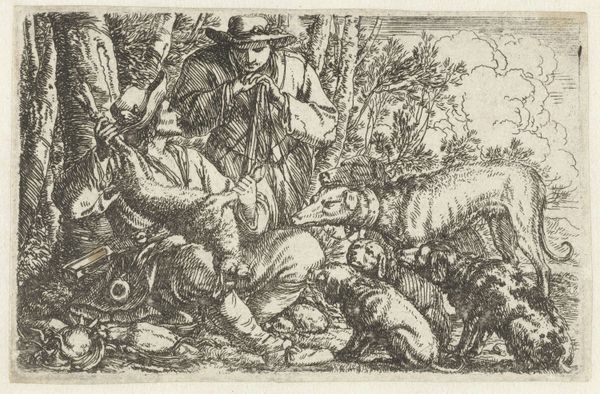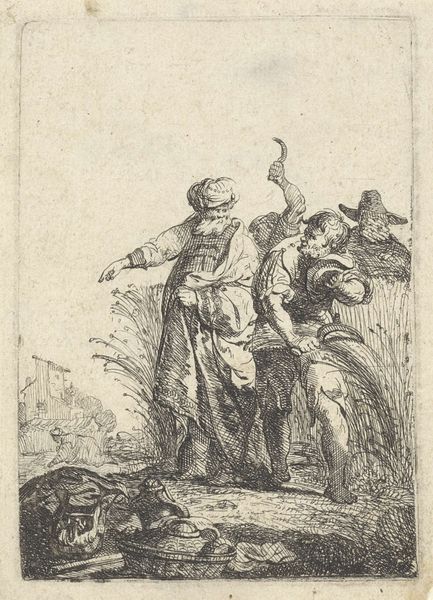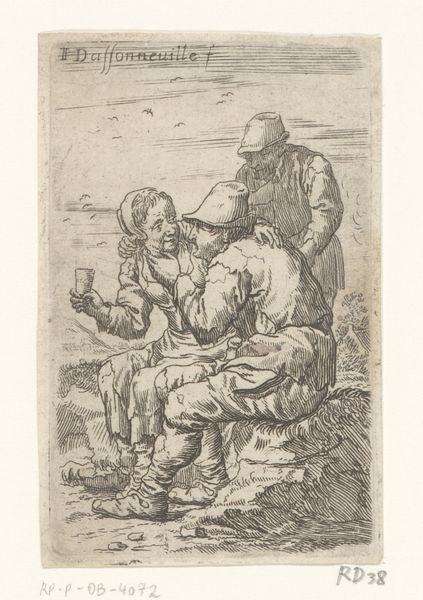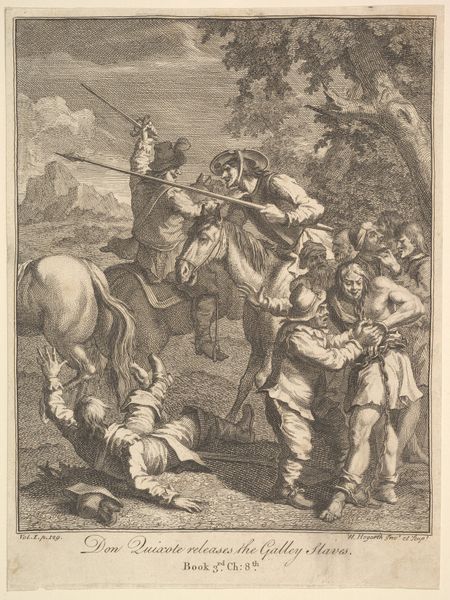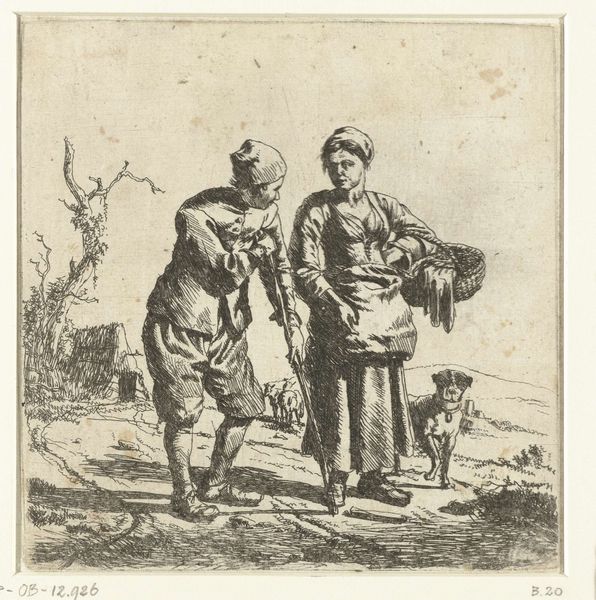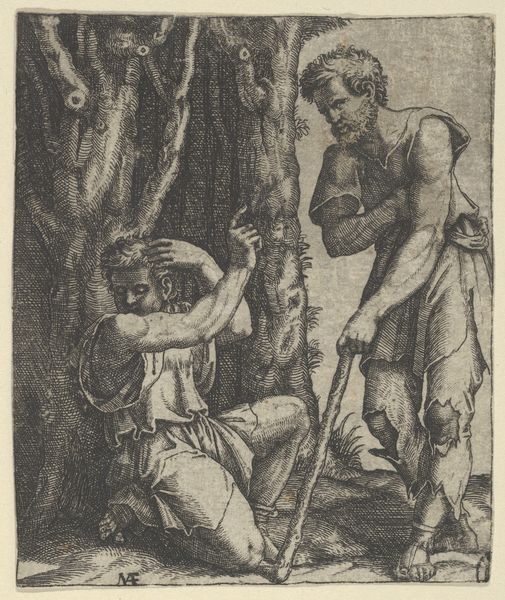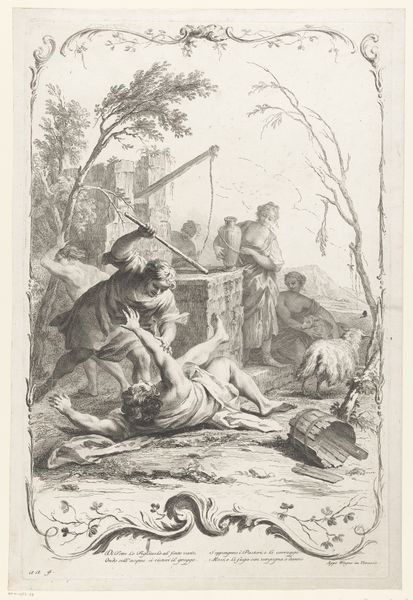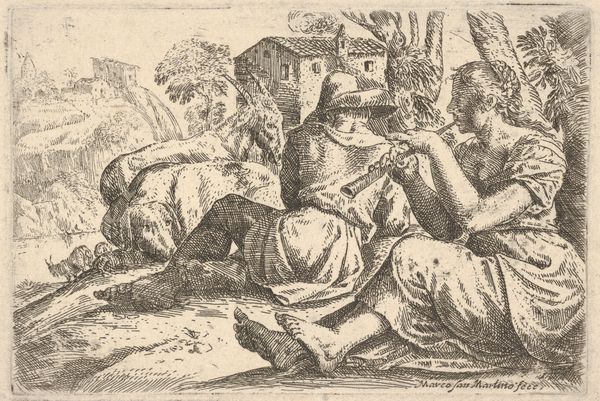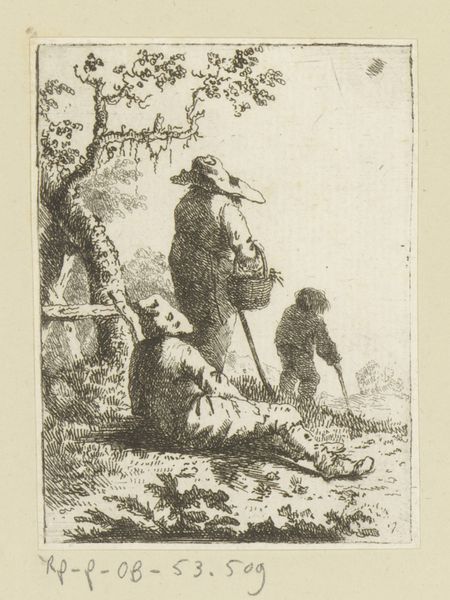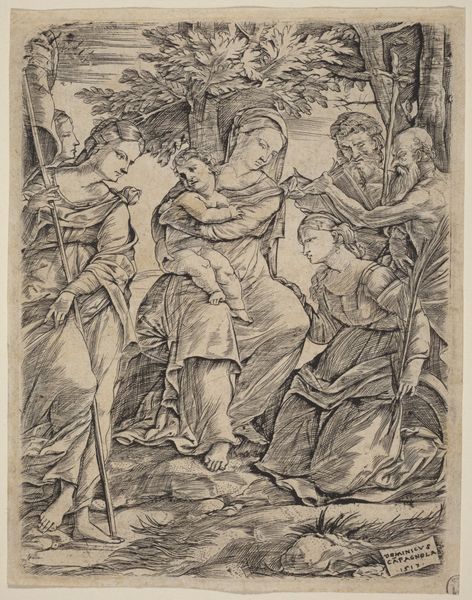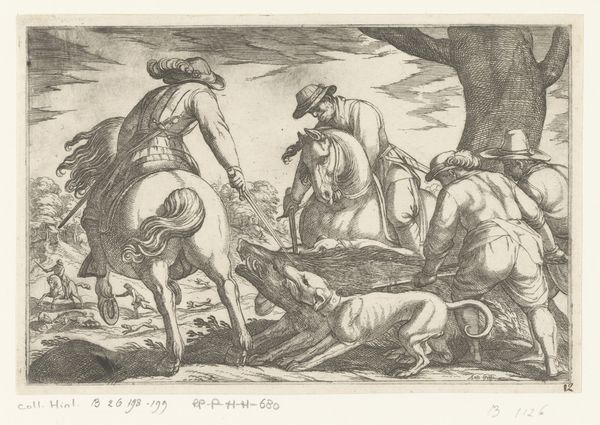
drawing, print, etching
#
drawing
#
baroque
# print
#
etching
#
landscape
#
genre-painting
Dimensions: Sheet (Trimmed): 5 1/4 × 4 5/16 in. (13.4 × 11 cm)
Copyright: Public Domain
Curator: At first glance, it looks so stark. Not depressing, exactly, but resigned. There's a story here, and it's not a happy one. Editor: It certainly has a weighty feel. This is "Five Beggars in the Countryside," a genre scene rendered as an etching sometime between 1635 and 1675. It's attributed to Jacques Dassonville and currently resides here at the Met. Curator: Etching is the perfect medium. That scratchy line work, those nervous shadows. It mirrors the anxiety etched on those faces. Look at them, gathered but so isolated, each lost in their own hunger or weariness. It makes you wonder what hardships they've endured to end up this way. Editor: Absolutely. Etchings like these were relatively accessible in the 17th century, compared to paintings. Prints could circulate widely and comment on social realities that those in power might prefer to ignore. Depictions of poverty weren't necessarily meant to be uplifting, but to provoke some thought about societal inequalities. Curator: Do you think they tell stories about themselves? Those men in the background look as though they share a memory. I want to know the stories they have! What has passed for each? Maybe they just tell themselves that things will improve… which probably it isn’t true, sadly. Editor: Well, the fact is we don't know much about Dassonville, so speculating about authorial intent can be difficult. This makes me think about how images like these could have been used—passed around amongst collectors, displayed in print shops, serving to solidify particular narratives about the "deserving" and "undeserving" poor. Curator: Perhaps...or, maybe the author identified with those vagabonds, just seeking some respite and fellowship… Maybe I do not want to analyse this so methodically as you do. Editor: I appreciate your more empathetic take. And the wonderful thing about art is that it invites both emotional responses and historical investigations. I agree, that there are times when facts dimm the colors of the stories contained on the artworks. Curator: True that! Perhaps next time you surprise me with something I know nothing about! It sounds thrilling to try to build stories like that on new things.
Comments
No comments
Be the first to comment and join the conversation on the ultimate creative platform.
